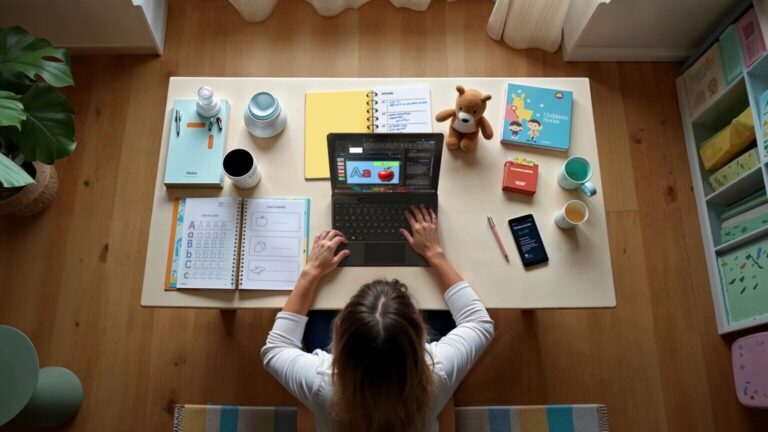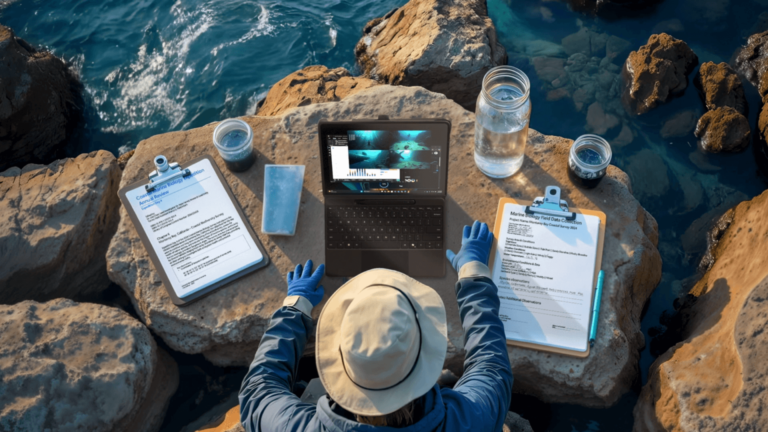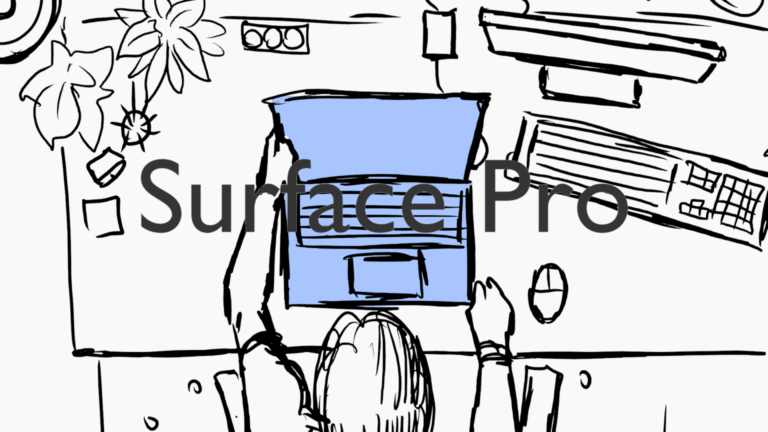The next revolution in advertising will likely be invisible. Microsoft has already demonstrated what generative AI is capable of in the field of digital marketing.
In January 2025, Microsoft quietly released a minute-long advertisement for its Surface Pro and Surface Laptop. The ad showcased people using these devices in various professional scenarios—from office meetings to outdoor fieldwork. What viewers didn’t realize was that many scenes in this polished commercial weren’t filmed at all—they were created using generative AI.
For nearly three months, the ad circulated online, gaining over 40,000 views on YouTube. Not a single viewer commented on or questioned the AI-generated content. It wasn’t until April that Microsoft revealed their creative approach through a blog post, unveiling how artificial intelligence had fundamentally transformed their production process.
“With a small budget and a tiny amount of time, we were able to accomplish in a month what would have traditionally required exponentially more resources,” explained Visual Designer Brian Townsend. “We probably saved 90% of the time and cost it would typically take.”
From Horse in Motion to AI Generation
The history of visual storytelling has always been marked by technological breakthroughs. In 1878, photographer Eadweard Muybridge created “The Horse in Motion,” considered the first film ever produced. His sequence of photographs answered a simple question: does a horse gallop with all four hooves off the ground?
Since then, filmmaking has continuously reinvented itself—from silent films starring Charlie Chaplin to the groundbreaking CGI of “Jurassic Park.” Throughout these evolutions, creators have constantly battled the tension between creative vision and practical constraints like budget, time, and available talent.
Generative AI represents the next frontier in this evolution, potentially solving age-old production challenges that have plagued even the most prestigious studios and advertising companies.
Inside Microsoft’s AI-Enhanced Advertising Production Process
For Microsoft’s Visual Design team, the Surface for Business ad presented a formidable advertising challenge: create a high-quality commercial within just one month. Faced with tight deadlines and limited resources, Creative Director Cisco McCarthy and Visual Designer Brian Townsend turned to generative AI.
Their process began with using AI to develop “a compelling script, storyboards and a pitch deck” that accurately represented their vision. These foundational elements, which traditionally might have required weeks, were completed in days.
The team then employed a combination of written descriptions and sample images, feeding them to an AI chatbot that transformed their ideas into prompts suitable for image generators. These generated images underwent further refinement to correct any errors or “hallucinations” before being fed into video generators like Hailuo and Kling.
“We probably went through thousands of different prompts, chiseling away at the output little by little until we got what we wanted,” McCarthy revealed. “There’s never really a one-and-done prompt.”
Human Direction Meets Artificial Generation
Despite the advanced capabilities of today’s AI tools, Microsoft’s team didn’t simply press a button and walk away. They made strategic advertising-related and technical decisions about which shots could be AI-generated and which required traditional filming.
“When deciding on which shots within the ad were to be AI-generated, the team determined that any intricate movement such as closeups of hands typing on keyboards had to be shot live,” explained senior design communications manager Jay Tan. “Shots that were quick cuts or with limited motion, however, were prime for co-creation with generative AI tools.”
The creative team maintained careful oversight throughout the process, meticulously correcting the “occasional AI hallucination” and integrating generated content with real footage. They employed techniques like top-down shots to minimize AI errors and used traditional video production tools to compose frames and remove unnatural elements.
This hybrid approach—blending human creativity with AI generation—proved remarkably effective. The quick cuts in the final ad helped mask any imperfections in the AI output, resulting in content that viewers couldn’t distinguish from traditionally produced material.
Creative Freedom Through Technological Efficiency
For McCarthy and Townsend, generative AI isn’t primarily about replacing human creativity—it’s about freeing creators from technical constraints.
“The faster we can make something move, the more creative freedom it gives us,” Townsend emphasized.
By automating time-consuming technical tasks, the team could redirect their energy toward ideation and creative refinement. They could rapidly visualize concepts and achieve visual consensus, accelerating what had traditionally been a slow, cumbersome process.
McCarthy recalled how generating keyboard images for the first Surface launch required creating assets in five physical layouts, each with 26 different prints for various languages. Today’s tools dramatically streamline such labor-intensive tasks.
The Easier and More Efficient Way of Visual Storytelling
Beyond improving efficiency for professional teams, generative AI is facilitating access to high-quality visual production. As McCarthy observed while holding up his smartphone, “It used to be you needed to have a fancy expensive camera and a really powerful computer to be able to move all that footage around, but it’s just not the case anymore.”
The threshold for creating polished visual content and advertising narrative has dropped significantly. With imagination and curiosity about available tools, virtually anyone can now produce sophisticated visual narratives that would have required substantial equipment and expertise just years ago.
The Future of Creativity in an AI-Enhanced World
Microsoft’s experience highlights how generative AI is becoming an integral part of the creative toolkit rather than a replacement for human creativity. As Microsoft’s design chief Jon Friedman noted, “suddenly the design job is how do you edit?”
The most compelling advertising will likely emerge from this harmonious blend of AI’s computational power and human creative direction. While AI can generate beautiful content at unprecedented speed, it’s human intuition, experience, and creative instinct that bring authentic depth to storytelling.
For brands and agencies working in this new technological setting in advertising industry, several insights emerge from Microsoft’s experiment:
- AI tools enable rapid iteration and visualization of concepts, helping teams achieve creative consensus more efficiently
- Smart integration of AI-generated and traditionally filmed content yields the best results
- Human oversight remains essential for maintaining quality and coherence
- The time and resources saved through AI can be reinvested in creative exploration
As McCarthy advises those experimenting with these emerging tools: “It comes from being relentless. Just keep pushing on the tools and if it truly can’t be done, wait a week.” Given the exponential pace of advancement in generative AI capabilities, yesterday’s limitations often become tomorrow’s solved problems.
The undetected presence of AI-generated content in Microsoft’s Surface ad signals a watershed moment for advertising production. As these tools continue to evolve, the question isn’t whether AI will transform creative processes, but how quickly and completely this transformation will take over the market.
If you are interested in this topic, we suggest you check our articles:
- AI Marketing Strategy: How to Plan and Execute for Maximum Efficiency
- Semrush: Harnessing AI to Transform Marketing Insights
- Virtual Influencers: Proof of AI’s Power in Leading Brand Marketing Campaigns
Written by Alius Noreika



